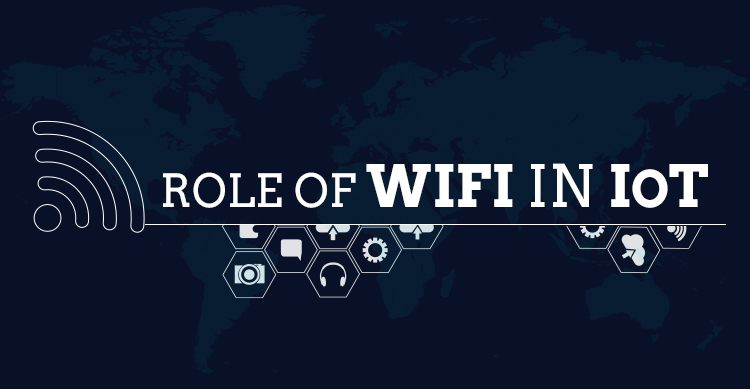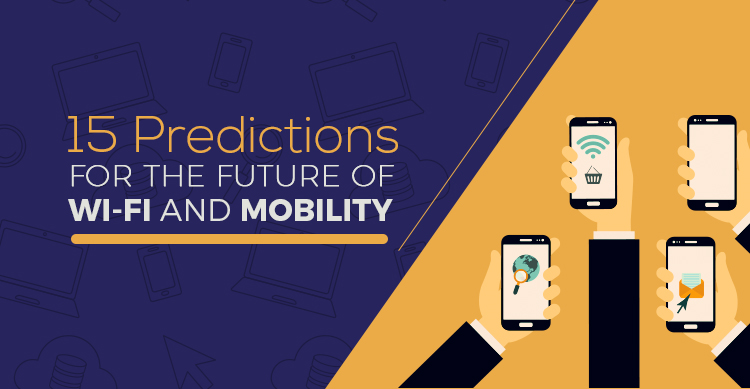Currently, Wi-Fi is the most sought after means to connect other mobile devices to the Internet. Recently there have been a number of surveys that were conducted to see the kind of activity taking place and the kind of devices that are connected. These surveys had some startling results to reveal.
Whereas tablets and e-Readers were the fastest growing category of devices that were being connected, the home was found to be the place where most people used their own mobile devices.
WI-Fi was the most preferred means to connect to the Internet. However, the respondents of the survey wanted a more seamless Wi-Fi integration with their mobile devices.
So much so, these surveys have managed to gather data as the basis for a few predictions as to how Wi-Fi and mobility will change in the next couple of years. Read on to know what is going to be different and what changes are in store.
1. Wi-Fi will become a business cost for business owners
Just like providing utilities such as lighting and heating, customers in restaurants, hospitals, public spaces, shopping malls, sports facilities will expect Wi-Fi to just be present there.
Therefore, very soon, for any organization that expects customers, providing Wi-Fi will add to the cost of doing their business.
2. Wi-Fi is going to be ‘omnipresent’
The prediction is that Wi-Fi public hotspots will increase exponentially over the next four or five years. Wi-Fi will be omnipresent. There are over 500 million hotspots expected by the year 2021. Currently there are an estimated 100 million hotspots worldwide.
You may not, perhaps, find it on the top of mountains, other remote places or along some highways. However, it is going to cover you like a blanket everywhere else that you spend your life: at home, schools, offices, hospitals, malls, and other public spaces.
3. People are likely to access all entertainment using their mobile devices
- Predictions are strong that about 50 percent of mobile device users are more likely to read eBooks in the next couple of years
- More than half of the mobile users will be watching recorded videos and streaming pictures
- At least three-quarters of mobile users worldwide will access social media networks
4. Customers would want Wi-Fi to be ‘free’
In all likelihood, customers would not want to pay for Wi-Fi. Most of them would expect that it is part of the overall service that has been provided like in bus stations, malls, hospitals, public spaces, etc.
5. Wi-Fi Wave 2 will take over
Wave 2 802.11ax is the latest Wi-Fi standard that has been certified by IEEE. The most unique new point about this standard is MU-MIMO.
It means, manufacturers can create access points that will be able to talk to multiple devices at the very same instant. In the earlier times the technology could handle multiple streams only in a sequential manner.
Though the new standard has not yet been formally ratified by IEEE, it is predicted that vendors may start releasing some gear (pre-standard) for 802.11ax version soon enough.
6. Quality of Public Wi-Fi will improve
Right now, many public-space Wi-Fi equipment and technology are on ‘trial mode’, meaning, their infrastructure is not top-class. However, with the predicted rise in the number of users, the level of expectations will be much higher.
Therefore, the authorities will have to deploy high-quality equipment and upgrade existing systems to better the performance to match the expectations of discerning customers.
7. Wi-Fi monetization ideas will emerge
Service providers will have to attach another cost component for provision of free Wi-Fi services. However, now monetization ideas such as data analytics, location-based services and advertising may come to the fore to recover these costs.
8. New models of Wi-Fi – based mobile offerings will come up
Mainstream cable and landline service providers are likely to make Wi-Fi centric mobile plans with cellular backup for customers. That is to say, more mainstream providers will opt for such models than ones that are already functioning in this niche.
9. Outsourcing of Wi-Fi operations to service providers will become more common
It is likely that Wi-Fi networks will grow more complex than before. In such a case, most businesses are likely to rope in service providers as partners to who they will outsource the operations and deployment as a managed service. In the meanwhile, the service providers will also be simultaneously expand their Wi-Fi networks.
10. Internet of Things will dependent on Wi-Fi
Internet of Things will depend on Wi-Fi for easy access. The Wi-Fi will be the key technology used to enable and access IOT deployments both at home and for businesses.
Wi-Fi technology will not have any of the challenges of coverage, cost and bandwidth presented by conventional mobile cellular networks.
11. Wholesale and retail Wi-Fi will emerge
Wi-Fi network operators will work to provide network capacity in wholesale and will get licensed mobile operators will work in small site locations or cells to expand their networks. The experience provided will be more mobile-like.
There would be agreements for domestic and international roaming facilities and access rates would differ. With global agreements, a consumer can roam out to different international Wi-Fi networks just like they do with mobile cell networks.
12. WI-Fi indoor mobile coverage will gain importance
Mobile operators are vying to increase their indoor mobile coverage by using the Wi-Fi calling facility. Some of the mobile companies are sending wireless routers to homes to provide high coverage.
13. Quality of mobile service will come down
In spite of increased data speeds, better access, security has become a big concern. It is also predicted that the quality of mobile services will take a hit. Handsets that are feature-rich, use of 3G technologies, and out-dated roaming service options have degraded mobile service quality over the years.
This trend is predicted to continue with introduction of newer mobile technologies. Even the use of feature-heavy handsets will degrade the quality of calls.
Complex applications will work to drain battery life and calls are likely to drop frequently. The call quality is also likely to be poor. Demand for phones that work on a single band is predicted to increase.
14. Smartphone access will mainly happen through Wi-Fi technology
It is predicted that over three-quarters of smartphones will use Wi-Fi regularly. Smartphone owners are likely to use Wi-Fi to connect to the Internet for nearly fifty per cent of the time.
15. There will be an exponential growth of Wi-Fi connected devices
According to research, there are expected to be close to 41 billion active Wi-Fi connected devices by the year 2020. Therefore, just from being a simple method to connect different devices, Wi-Fi will emerge as an extended and integrated customer-centric technology.
Final Thoughts
With the above trends in mind, it is important for service providers to take advantage of the propositions that Wi-Fi offers to better their services and reward better customer experience. This would help to increase customer loyalty and optimize costs in the future.

